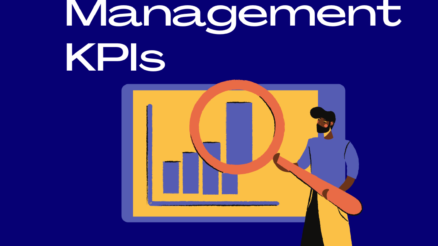Change is always happening. Whether your company is expanding, downsizing, or just evolving with the times.
Change brings with it uncertainty and risk – two things that can make even the most stalwart professionals uneasy. But as any successful businessperson will tell you, embracing change is essential for survival in today’s marketplace.
So how do you go about embracing change when it feels so risky?
One key factor is having an accurate understanding of the costs associated with change management. By gaining an understanding of these costs up front, you can make more informed decisions about whether and how to enact changes in your organization.
This article will provide an overview of the different types of costs associated with change management, as well as some tips on how to keep these costs down.
Why estimating cost of change management is important?
One of the key components of effective change management is cost estimation. Organizations underestimate the cost of change management when implementing changes to their business processes. There are a number of factors that need to be considered when estimating the cost of change management, including the size and scope of the project, the amount of training required, and the level of resistance to change.
In addition, it is important to factor in the cost of any potential disruptions to business operations that may occur during the transition period. By taking all of these factors into account, organizations can develop a more accurate estimate of the cost of change management. With a better understanding of the cost involved, organizations can make more informed decisions about whether or not to proceed with a particular change.
Once the scope is understood, then a cost estimate can be put together which will include all the necessary elements for a successful change management transition. The cost estimation should also include a contingency plan in case any unforeseen obstacles arise during the process.
By taking all these factors into account, you can develop a clear and accurate cost estimate for your change management project.
Cost estimation helps to ensure that sufficient resources are allocated to the change process. It also aids in decision-making by helping to identify potential cost savings. Without cost estimation, organizations may find themselves overspending on unnecessary changes or under-investing in changes that could bring about significant improvements.
For these reasons, cost estimation is an essential part of effective change management.
Let’s see what are the main areas of change management and what is its cost.
1. Human resource cost
While the cost of change can be difficult to quantify, there are certain resources that are essential for ensuring a successful transition. First and foremost, organizations need to invest in people. Change initiatives often require additional staffing, training, and professional development to ensure that employees are equipped to handle the new reality.
Other important resources include technology, communications, and data. By taking the time to accurately estimate the cost of these crucial resources, organizations can set themselves up for success as they embark on their journey of change.
2. Training cost
Organizations have to go through a lot of changes from time to time in order to be able to stay relevant and achieve their objectives. Change management is a process that helps organizations to plan, execute and monitor changes in a systematic and controlled manner. Change management training helps organizations to equip their employees with the necessary skills and knowledge to be able to effectively manage changes.
The cost of change management training depends on various factors such as the number of employees to be trained, the duration of the training, the type of training, etc. Organizations need to carefully plan and estimate the cost of change management training in order to ensure that it is within their budget.
3. Communications cost
Change management is a process that helps organizations identify and prepare for the changes they need to make. Change management communications are an essential part of this process, as they help to ensure that all stakeholders are aware of the changes taking place and understand how these changes will impact them.
There are a number of different channels that can be used for change management communications, each with its own advantages and disadvantages. cost considerations are often a major deciding factor when choosing a communication channel, and it is important to carefully consider all cost estimates before making a decision. In general, cost-effective change management communications strategies make use of a combination of different channels in order to reach the widest possible audience.
4. Travel cost
Any cost estimation of change management must consider the travel costs associated with full implementation. One cost-cutting measure is to provide employees with a stipend to use for public transportation instead of reimbursing them for parking fees and gasoline. If some employees must travel out of state or country for their job, then the company should reimburse them for their airfare, lodging, and other travel expenses.
The cost of these measures will be offset by the savings realized from reduced gas consumption and fewer car emissions. In addition, this approach will provide employees with a financial incentive to use public transportation, which can help to reduce traffic congestion and improve air quality.
5. Time
One cost estimation of change management is the cost of time spent. The cost can be high when taking into account the time needed for research, planning, training, and implementing the changes. disruptions to daily operations. Change management can also take a significant amount of time if not done correctly. In order to properly manage changes, businesses need to have a strategy in place.
This strategy should include identifying who will be responsible for each stage of the process and setting timelines. Without a clear plan, businesses will likely find themselves wasting time and money on unnecessary steps. Effective change management can help businesses to avoid these costly mistakes and ensure that changes are made efficiently and effectively.
6. Technology adoption cost
One of the cost factors to consider in change management is the cost of technology adoption. There are many different technologies available to assist in change management, and the cost of adoption can vary widely depending on the specific technology. In general, however, the cost of technology adoption for change management can be divided into three main categories: hardware costs, software costs, and personnel costs.Hardware costs include the cost of any physical infrastructure that is required to support the new technology.
This could include servers, storage systems, networking equipment, and so forth. Software costs include the cost of any licenses or subscriptions that are required to use the new technology. Personnel costs include the cost of training staff on how to use the new technology, as well as any additional staff that may be required to support its use. When estimating the cost of adoption for change management, it is important to consider all of these factors in order to get a realistic estimate.
How to reduce the cost of change management?
Estimating the cost of change management is a tricky business. A host of factors can contribute to the cost of implementing a change, from the size and complexity of the organization to the urgency of the need for change.
However, there are some steps that organizations can take to help reduce the cost of change management.
One way to save money is to carefully select the change management team. Choose individuals with the necessary skills and experience, and be sure to involve them in the planning process from the outset.
In addition, it is important to develop a clear and concise plan for executing the change. By taking the time to map out all the steps involved, organizations can avoid cost overruns and ensure that the changes are implemented smoothly and efficiently.
Finally, it is crucial to communicate regularly with all stakeholders throughout the process. By keeping everyone informed and updated on progress, organizations can help build support for the change and avoid last-minute surprises that could add to the cost.
By following these steps, organizations can help keep the cost of change management under control.
Final Words
There are different types of costs that need to be considered when estimating the cost of change management. These include resource cost, training cost, communication cost, and technology adoption. It is better to reduce these costs as much as possible in order to make the most efficient use of resources.



